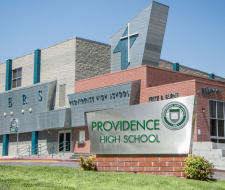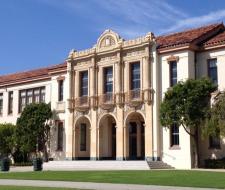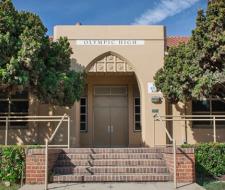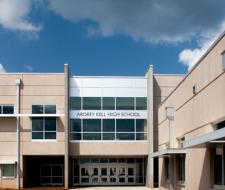Best public schools in USA 2024
-
 from 32590.00 $ / yearApply with documents
from 32590.00 $ / yearApply with documents -
 from 39390.00 $ / yearApply with documents
from 39390.00 $ / yearApply with documents -
 from 39390.00 $ / yearApply with documents
from 39390.00 $ / yearApply with documents -
 from 39390.00 $ / yearApply with documents
from 39390.00 $ / yearApply with documents -
 from 32590.00 $ / yearApply with documents
from 32590.00 $ / yearApply with documents -
 from 39390.00 $ / yearApply with documents
from 39390.00 $ / yearApply with documents -
 from 32590.00 $ / yearApply with documents
from 32590.00 $ / yearApply with documents -
 from 32590.00 $ / yearApply with documents
from 32590.00 $ / yearApply with documents -
 from 39390.00 $ / yearApply with documents
from 39390.00 $ / yearApply with documents -
 from 32190.00 $ / yearApply with documents
from 32190.00 $ / yearApply with documents
Alternative destinations
Education information
In the American school, children study for 12 years – from 5-6 to 17-18 years. Each school determines the age of enrollment of foreign students independently. In some cases, children are accepted from the age of 7, but few parents are willing to send a child abroad at this age, so, as a rule, middle-aged children (13-14 years old) come or older (16-17 years old) school age. If you came to America with your parents, you will be taken at any age. Grades 12 are divided into Elementary school (1-5), Middle School (6-8) and High School (9-12). All these stages (primary, secondary, senior classes) are separate educational institutions, and each of them inside also resembles an academic campus. Educational institutions are located separately from each other, each has its own director, teachers, administration.
There is no single state standard of education in the USA. The formation of the curriculum in the most general form (a list of the main disciplines, the dates of the beginning and end of the academic year) is handled by the Board of Education under the state administration. At the same time, all the specifics, such as textbooks, the volume and nature of the material taught, are determined by school employees themselves.
This means that each educational institution is free to manage the time of its students as it sees fit. The variety of programs and teaching methods in American schools, on the one hand, makes it possible to choose an educational institution that meets the individual needs of a student. On the other hand, the breadth of choice considerably complicates the life of parents and, sometimes, only complicates the search for a place of study.
Elementary schools in the USA – specifics of studying
There are no state kindergartens here: kids attend private kindergartens, stay at home with relatives or nannies. Secondary education in the USA does not begin with the first, but with the zero grade, which is called kindergarten, but the usual kindergarten (and not the zero grade of the school) in America is called preschool. Accordingly, the child goes to "preschool" (from 3-4 years old), and then to "kindergarten" or kindergarten – from 5 years old. The classrooms of the elementary school are divided into several study areas – students either sit at round tables of 5-6 people, or on a carpet near bookshelves, or at computers (usually there are several computers per class). The teacher gives the task, the children do it on their own, they can move around safely (this is even welcome). The teacher observes a certain daily routine without breaking down into lessons, students have lunch during the big break, in autumn and spring a break is held outdoors. Basic academic subjects: writing, reading, the basics of mathematics, the world around them (they are taught by one teacher), and creative, musical, sports lessons are taught by other teachers.
Secondary schools in the USA – how the studying process is organized?
- Middle school
In the middle classes of US educational institutions, each subject has its own teacher, and students have a certain freedom of choice of disciplines. Mathematics, English, Sciences (physics, chemistry, biology, geology, astronomy), history, physical education, creativity remain mandatory. Students choose 1-2 subjects themselves: most often it is computer technology, cooking, a foreign language or art. There is an opportunity to choose a more complex program for a specific subject: to do this, you need to get an excellent annual grade on it.
- High school
High school offer much more freedom in the choice of disciplines, level of its studying. The following blocks of subjects are compulsory:
- 2 years of Mathematics
- 4 years of English
- 2 years of natural sciences (with laboratory work)
- 3 years of social sciences
- 1 year of physical education
- 1 year art course.
Starting from the 9th grade, some subjects can be studied more deeply on Advanced Placement program. Most often, students choose disciplines that they will study later. Advanced Placement includes 38 subjects. The most prestigious universities do not consider certificates with an average score below 4.25, and this score cannot be obtained without advanced AP courses. High school includes 4 years of study, from grade 9 to grade 12: they have their own specialization, so careful preparation for admission begins from grade 9 (university, vocational courses, college). During the studying, you can accumulate enough knowledge for admission and get academic credits, which will allow you to save significantly. High school involves compulsory study of English, mathematics, social subjects, natural sciences. The senior classes offer 4 areas of specialized education:
- Industrial
- Agricultural
- Commercial
- General
- Academic.
Tuition fee in schools in the USA for foreign students
The studying in the public schools in the USA is free of charge. They are financed from the local budget, which is replenished mainly by property taxes. Accordingly, if you are not a US citizen or do not have a resident status, then you pay for education. The cost depends on the ranking of the school, state, prestige, history: on average, a year of study costs from $ 40,000 to $ 70,000. Private schools include accommodation, meals, extracurricular activities, clubs, educational materials, English courses for foreign students, preparation for final exams.
Enrolment process in primary schools in the USA
The deadlines for applying for admission differ from school to school. Usually foreign students need to have time to submit the following documents before January 31:
- Motivation letter;
- An extract from the local school report card with current grades;
- Recommendation letters from teachers;
- The results of test TOEFL;
- Diplomas, certificates (if available).



